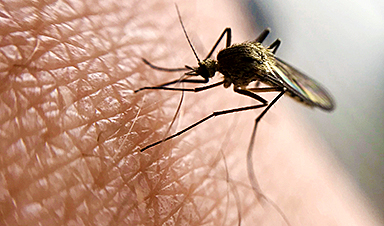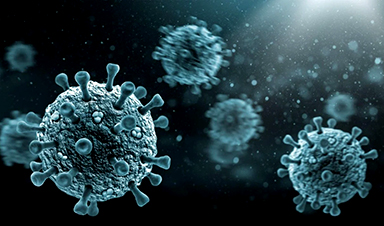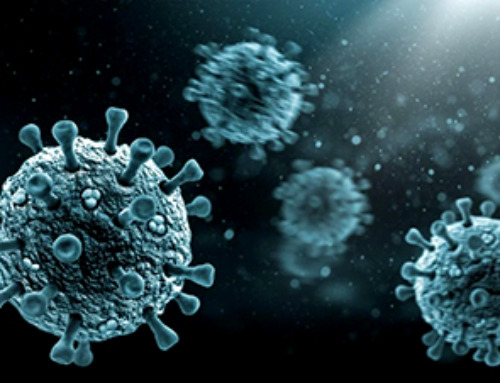The American South has been under constant duress from extreme weather events spurred by rising global temperatures, but the region could face a different kind of threat that it hasn’t experienced in over a century: yellow fever.
What’s happening?
A joint report from the Baylor College of Medicine and the Stanford School of Medicine published in the New England Journal of Medicine warned that warmer climates, urbanization, and “shifting patterns of human migration” are increasing the likelihood of a rapid spread of mosquito-borne infections in the States.
It noted that “extreme poverty throughout Texas and the Gulf Coast states, where inadequate or low-quality housing, absent or broken window screens, and a pervasive dumping of tires in poor neighborhoods” can become breeding sites for mosquitoes, make the South particularly vulnerable.
“We’ve seen a rise in mosquito-transmitted illnesses in Texas and Florida, including malaria, dengue, chikungunya and Zika virus, but now we’re also worried about yellow fever since it seems to be accelerating in tropical regions of Latin America such as Brazil and Venezuela,” Dr. Peter Hotez, professor and dean of Baylor College of Medicine and co-author of the paper, said in a statement.
Why is the return of yellow fever concerning?
According to the WHO, common symptoms of yellow fever include fever, headaches, muscle pain, nausea, vomiting, and fatigue. It can affect the liver and kidneys in severe cases and cause jaundice, the yellowing of skin, from which the virus gets its name.
While yellow fever falls under the same classifications as dengue and Zika virus, it has a higher mortality rate, killing approximately half of the afflicted patients within seven to 10 days after they enter the toxic phase.
Yellow fever’s potential return to prominence underscores the ripple effects of a warming planet. Rising temperatures have allowed mosquitoes to migrate to newer environments while lengthening the season in which the insects are active.
“One of the reasons we established National School of Tropical Medicine at Baylor was in recognition that tropical infections have become a new normal due to a confluence of climate change, urbanization and poverty on the U.S. Gulf Coast and Texas,” Dr. Hotez added.
What is being done about the potential threat of yellow fever?
The researchers called for mosquito control through the development of antiviral drugs, vaccines, and genetic engineering to permanently alter mosquito genes.
“The mosquitoes that spread yellow fever are here in the U.S. and conditions are increasingly favorable for them as our world warms,” said Dr. Desiree LaBeaud, professor of pediatrics-infectious disease at Stanford School of Medicine and publication co-author. “We need a comprehensive plan to better protect at-risk communities in the southern U.S. from mosquito-borne diseases.”
In the meantime, individuals can prepare by taking a single-dose yellow fever vaccine that has been available for over eight decades or using pesticide-free measures to either repel mosquitoes or prevent their reproduction.
News
Global Nanomaterial Regulation: A Country-by-Country Comparison
Nanomaterials are materials with at least one dimension smaller than 100 nanometres (about 100,000 times thinner than a human hair). Because of their tiny size, they have unique properties that can be useful in [...]
Pandemic Potential: Scientists Discover 3 Hotspots of Deadly Emerging Disease in the US
Virginia Tech researchers discovered six new rodent carriers of hantavirus and identified U.S. hotspots, highlighting the virus’s adaptability and the impact of climate and ecology on its spread. Hantavirus recently drew public attention following reports [...]
Studies detail high rates of long COVID among healthcare, dental workers
Researchers have estimated approximately 8% of Americas have ever experienced long COVID, or lasting symptoms, following an acute COVID-19 infection. Now two recent international studies suggest that the percentage is much higher among healthcare workers [...]
Melting Arctic Ice May Unleash Ancient Deadly Diseases, Scientists Warn
Melting Arctic ice increases human and animal interactions, raising the risk of infectious disease spread. Researchers urge early intervention and surveillance. Climate change is opening new pathways for the spread of infectious diseases such [...]
Scientists May Have Found a Secret Weapon To Stop Pancreatic Cancer Before It Starts
Researchers at Cold Spring Harbor Laboratory have found that blocking the FGFR2 and EGFR genes can stop early-stage pancreatic cancer from progressing, offering a promising path toward prevention. Pancreatic cancer is expected to become [...]
Breakthrough Drug Restores Vision: Researchers Successfully Reverse Retinal Damage
Blocking the PROX1 protein allowed KAIST researchers to regenerate damaged retinas and restore vision in mice. Vision is one of the most important human senses, yet more than 300 million people around the world are at [...]
Differentiating cancerous and healthy cells through motion analysis
Researchers from Tokyo Metropolitan University have found that the motion of unlabeled cells can be used to tell whether they are cancerous or healthy. They observed malignant fibrosarcoma [...]
This Tiny Cellular Gate Could Be the Key to Curing Cancer – And Regrowing Hair
After more than five decades of mystery, scientists have finally unveiled the detailed structure and function of a long-theorized molecular machine in our mitochondria — the mitochondrial pyruvate carrier. This microscopic gatekeeper controls how [...]
Unlocking Vision’s Secrets: Researchers Reveal 3D Structure of Key Eye Protein
Researchers have uncovered the 3D structure of RBP3, a key protein in vision, revealing how it transports retinoids and fatty acids and how its dysfunction may lead to retinal diseases. Proteins play a critical [...]
5 Key Facts About Nanoplastics and How They Affect the Human Body
Nanoplastics are typically defined as plastic particles smaller than 1000 nanometers. These particles are increasingly being detected in human tissues: they can bypass biological barriers, accumulate in organs, and may influence health in ways [...]
Measles Is Back: Doctors Warn of Dangerous Surge Across the U.S.
Parents are encouraged to contact their pediatrician if their child has been exposed to measles or is showing symptoms. Pediatric infectious disease experts are emphasizing the critical importance of measles vaccination, as the highly [...]
AI at the Speed of Light: How Silicon Photonics Are Reinventing Hardware
A cutting-edge AI acceleration platform powered by light rather than electricity could revolutionize how AI is trained and deployed. Using photonic integrated circuits made from advanced III-V semiconductors, researchers have developed a system that vastly [...]
A Grain of Brain, 523 Million Synapses, Most Complicated Neuroscience Experiment Ever Attempted
A team of over 150 scientists has achieved what once seemed impossible: a complete wiring and activity map of a tiny section of a mammalian brain. This feat, part of the MICrONS Project, rivals [...]
The Secret “Radar” Bacteria Use To Outsmart Their Enemies
A chemical radar allows bacteria to sense and eliminate predators. Investigating how microorganisms communicate deepens our understanding of the complex ecological interactions that shape our environment is an area of key focus for the [...]
Psychologists explore ethical issues associated with human-AI relationships
It's becoming increasingly commonplace for people to develop intimate, long-term relationships with artificial intelligence (AI) technologies. At their extreme, people have "married" their AI companions in non-legally binding ceremonies, and at least two people [...]
When You Lose Weight, Where Does It Actually Go?
Most health professionals lack a clear understanding of how body fat is lost, often subscribing to misconceptions like fat converting to energy or muscle. The truth is, fat is actually broken down into carbon [...]





















